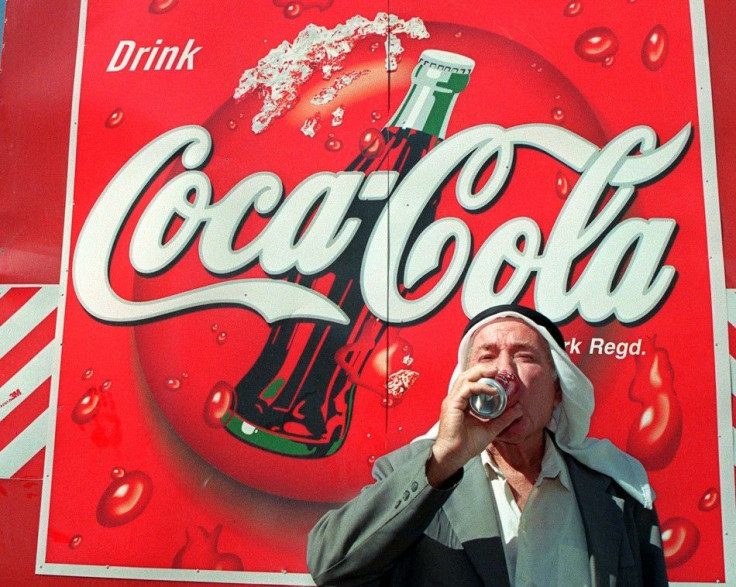Coca-Cola (KO) Q1 Earnings Up 8% On Emerging Market Gains

The Coca-Cola Co. (NYSE: KO), the world's largest soft-drink maker, reported first-quarter profits that topped analysts' estimates, helped by price increases and strong demand in emerging markets.
Coca-Cola also said it was on track with a cost-reduction and reinvestment program aiming to save $550 million to $650 million by the end of 2015.
Net income for the Atlanta-based company rose 7.9 percent to $2.05 billion, or 89 cents a share, from $1.9 billion, or 82 cents, a year earlier, Coca-Cola said Tuesday in a statement. Analysts polled by Thomson Reuters projected 88 cents. The consensus estimate remains unchanged over the past month, but it has moved down from three months ago when it was 92 cents.
Revenue rose 6 percent to $11.14 billion in the quarter, higher than the $10.82 billion projected by analysts.
For 2012, we expect Coca-Cola to continue to meet or exceed its long-term growth objectives, HSBC analyst Lauren Torres said. This should be supported by continued volume and pricing growth, as well as the company's cost savings and productivity initiatives.
Coca-Cola's profits have been on the rise over its last three fiscal years from $5.8 billion in 2008 to over $11.8 billion in its last fiscal year.
Forty-three percent of stores in the world carry Coca-Cola products. Every day Coca-Cola sells 1.7 billion servings of its beverages globally.
For Coca-Cola, our biggest competitor is really our past and our biggest challenge is really our present, Joseph V. Tripodi, executive vice president and chief marketing and commercial officer, said at a marketing meeting in New York.
Coca-Cola's brands include Fanta, Sprite, Dasani water and Minute Maid juice. The company has introduced smaller package sizes and raised prices to offset higher ingredient costs. Like many other companies, including chief rival PepsiCo Inc., Coca-Cola has also looked overseas for growth.
Emerging Markets
Emerging markets are still growing well ahead of developed markets so far, and there is little reason to think this will not continue to be the case, Goldman Sachs analyst Judy E. Hong wrote in a note to clients.
First-quarter volume rose 5 percent globally, driven by solid gains in key emerging markets. Sales volume in India soared 20 percent, while China and Brazil saw volume hike 9 percent and 4 percent, respectively.
In North America, where the soft drink industry is in a seven-year decline, Coca-Cola achieved volume growth of 2 percent in the first quarter. Growth in Europe was the slowest among all markets, posting a one percent gain.
While some countries might be dropping in demand, especially those with high economic uncertainty in parts of Europe, other regions in the world provide opportunities for Coca-Cola because they compete in over 200 countries, said Thomas Mullarkey, an analyst at Morningstar.
In 2011, more than 55 percent of Coca-Cola's net operating income and nearly 80 percent of its unit case volume were generated outside of North America.
Coca-Cola opened its forty-second bottling plant in China on March 29 to meet demands arising from the country's increasing middle-class population and urbanization.
In August, the company announced it would invest an additional $4 billion in China in the next three years, starting in 2012. Coca-Cola said China -- the country with a population of more than 1.3 billion -- will become the biggest market for the company by 2020.
At the moment, the consumption for our products per capita in China is still lower than other places, Martin Jansen, chief executive officer of Coca-Cola Bottling Investments Group China, told the newspaper China Daily. So if we can continue our growth momentum, actually before 2020, China will become the largest market of Coca-Cola globally.
Annual per capita consumption of Coca-Cola products in China is only 34 servings, versus eight servings in 1998, and versus 394 servings in the United States.
We see significant opportunities for consumption growth in developing and emerging regions, Standard & Poor's analyst Esther Kwon wrote in a note to clients.
Productivity
Challenges over commodity costs and volatility in foreign exchange continue to mount.
The company expects to see $350 million to $450 million of commodity pressure in 2012, while also forecasting a low single-digit negative currencies impact on the first quarter operating income and a mid-single-digit negative impact on operating income for full-year 2012.
Coca-Cola announced a new cost-cutting plan aimed at reducing costs of $550 million to $650 million by 2015. This came after the company completed a $500 million four-year savings program in 2011.
Coca-Cola said savings from the program will be reinvested into marketing and help offset rising commodity costs.
We believe these savings, as well as the company's pricing initiatives, should help offset a volatile commodity cost and FX rate environment in 2012, Torres said.
Stock Performance
The Coca-Cola Company has increased dividends for 49 consecutive years.
In the first quarter of 2012, Coca-Cola increased its quarterly dividend from 47 cents per share to 51 cents a share to provide a total of $2.04 per share over the last four quarters and a 3 percent yield.
Coca-Cola's major competitor, PepsiCo, Inc. (NYSE: PEP), is set to report its first-quarter earnings results on April 26 before the market opens.
Other competitors include: Dr. Pepper Snapple Group Inc. (NYSE: DPS), Monster Beverage Corp. (NASDAQ: MNST), Coca-Cola Enterprises Inc. (NYSE: CCE), Unilever N.V. (NYSE: UN), and Kraft Foods Inc. (NYSE: KFT).
Shares of the Coca-Cola Company (NYSE: KO) were up $1.93, or 2.68 percent, to $74.39 a share, in midday trading. Year to date, the stock price has appreciated 6.07 percent.
© Copyright IBTimes 2024. All rights reserved.












